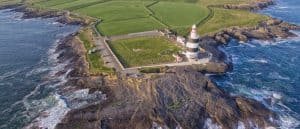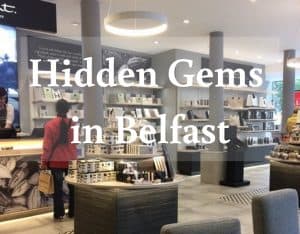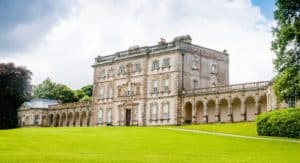The Renaissance Period in Italy: A Flourish of Art, Culture, and Innovation

Updated On: April 01, 2024 by Yasmin Elwan
Italy served as the cradle for the transformative period known as the Renaissance, which heralded the resurgence of classical humanism and set a benchmark for artistic, scientific, and intellectual revolution. During the 14th to the 17th centuries, a series of Italian city-states stood at the forefront of this cultural reawakening, evolving into epicentres of power, innovation, and creativity. These cities, bubbling with a confluence of ideas and patronage from influential families, prompted a prolific outpouring of artistic and architectural masterpieces alongside groundbreaking scientific and literary works.

Florence, Venice, and Rome became synonymous with this cultural flourishing. The Medici family in Florence nurtured a habitat where artists like Leonardo da Vinci and Michelangelo could create works that would awe humanity for generations. Venice, a hub of global trade, fostered a similarly rich artistic environment, while Rome, supported by the Papacy, transformed into a canvas displaying the grandeur of the High Renaissance. Each city contributed its distinctive touch to the fabric of the era—be it through the splendour of its palaces, the daring thinking of its philosophers, or the intricacies of its political landscape.
The Birth of the Renaissance Period in Italy
The Renaissance marked a pivotal moment when Europe transitioned from the medieval period to the early modern age, with Italy as its crucible—most notably the city of Florence.
Humanism and Its Impact
Humanism, a key driver of the Renaissance, ushered in a cultural rebirth centred on the study of classical texts, emphasising the value of human potential and achievements. In the bustling streets of Florence, thinkers and scholars embraced humanist philosophy, pushing the boundaries of culture, history, and the arts. This intellectual movement placed humans, rather than the divine, at the centre of its contemplation and created a foundation upon which myriad aspects of the modern world would be built.
The rise of humanist thinkers fostered a new environment that was ripe for artistic innovation, contributing to the splendour of the Italian city-states. Humanism effectively transformed the societal fabric by influencing education, governance, and social norms. The shift in thinking propelled the creation of literature, visual arts, and scientific inquiry that channelled the classical past, embedding a lasting legacy in the culture and history of not just Italy but the entire world.
Iconic Cities and Their Roles

Italy’s Renaissance period was marked by the prominence of several city-states, each carving a distinct niche in terms of art, science, and power. These cities were not just mere settlements but were the epicentres of cultural revolutions that shaped the modern western world.
Florence: Cradle of the Renaissance
Florence is widely acknowledged as the birthplace of the Renaissance. Here, the Medici family’s patronage fostered an environment where artists and thinkers such as Leonardo da Vinci and Michelangelo could create works that remain pivotal to Western art. Florence was a crucible of creativity, where the rediscovery of classical philosophies merged with new ideas to spark an unparalleled cultural rebirth.
Rome: The Papal Powerhouse
In Rome, the Papal States were instrumental in the Renaissance’s evolution. As the seat of the Catholic Church, Rome attracted artists and architects who designed iconic structures such as St. Peter’s Basilica. The city was a vast stage for the Church’s display of wealth and power, where the arts were employed to communicate religious narratives and underscore the papacy’s authority.
Venice: The Merchant Republic
Venice’s labyrinth of canals and opulent architecture mirror its history as a powerful merchant republic. It was a hub for trade and the exchange of ideas between Europe and the East, benefiting from the immense wealth that flowed through its ports. Venice’s distinct governance and affluence underpinned its distinctive artistic and architectural achievements.
Milan: The Duchy of Influence
Milan served as the capital of the Duchy of Milan, a commanding state in Northern Italy. Its strategic position in the Italian peninsula’s rich and fertile Po Valley contributed to its prominence in commerce and politics. Milan was also a centre of art and culture where the Sforza dukes’ patronage left an indelible mark on the Renaissance era.
Bologna: Intellectual Centre
Bologna’s reputation during the Renaissance stemmed from its status as an intellectual centre. Its university, one of the oldest in the world, drew students and scholars, cementing the city’s role as a bastion of humanist thought and education. Bologna’s academic influence radiated throughout Italy and Europe, contributing to the intellectual ferment of the time.
Architectural Marvels

We shall explore the ingenuity and aesthetic brilliance of Renaissance Italy through its architectural marvels, where visionaries like Brunelleschi redefined structures and spaces.
Redefining Space and Form
The Renaissance period was a turning point in architectural history with a renewed focus on symmetry, proportion, and geometry, stemming from the rediscovery of classical antiquity’s principles. It was Filippo Brunelleschi who introduced linear perspective, a key element in the architectural transformations of the era. His ingenious engineering of the Duomo’s Dome in Florence is a prime example of this fundamental shift.
Cathedral and Church Constructions
Churches and cathedrals stand as testaments to the Renaissance’s architectural prowess. Among them, the Cathedral of Santa Maria del Fiore, commonly known as the Florence Cathedral, is particularly renowned. The cathedral’s dome, an iconic emblem of Florence’s skyline, was unprecedented in scale and was a significant architectural advancement of its time. In ecclesiastical architecture, the Basilica of St. Peter stands out with its grandeur and was another project that utilised new approaches to space and design, showcasing the seamless blend of artistry and engineering during the Renaissance.
Artistic Genius and Innovations
In the blossoming cities of Italy during the Renaissance, an unprecedented wave of artistic mastery and technical innovation reshaped the world of art. From the iconic frescoes of Michelangelo to the groundbreaking realism of Masaccio, this period marked a renaissance not only in thought but in the very way art was created and viewed.
The Mastery of Painting
The Italian Renaissance saw tempera give way to the richer medium of oil paint, heralding a new vividness in colour and texture. Artists like Botticelli and Raphael emerged, enchanting the world with their ability to capture both the physical beauty and the inner soul of their subjects. Portraits became not just depictions of individuals but windows into their status and character. The Mona Lisa, painted by Leonardo Da Vinci, remains the epitome of Renaissance portraiture, her enigmatic expression captivating viewers for centuries.
Sculpture and Public Art
Renaissance Italy redefined sculpture, moving it from mere decoration to a central form of public art. Artists like Donatello reintroduced classical forms with works such as his revolutionary bronze David. Michelangelo’s David, on the other hand, exemplified the power and beauty of the human form in marble on an unprecedented scale. These sculptures were not only displays of technical prowess but also symbols of the cities’ power and cultural aspirations.
Innovations in Perspective and Realism
Groundbreaking advancements in understanding perspective and optical reality marked the Renaissance. Giotto began the move towards realism with his frescoes that depicted three-dimensional space. Masaccio continued this trend, using mathematical precision to create the illusion of depth, a technique further honed by artists like Leonardo and Raphael. These innovations allowed for the creation of complex, realistic scenes that pulled the viewer into the canvas, a first in the history of art.
Our examination of this period reveals a confluence of artistic talent and ingenuity that has defined the Italian Renaissance as a pinnacle of cultural achievement.
Renaissance Literature and Thought
In the vibrant tapestry of the Italian Renaissance, literature and philosophical thought mirror the epoch’s societal transformation and intellectual vigour. Our journey through this era uncovers profound narratives and ideas that continue to resonate with us.
Literature as a Reflection of Society
Renaissance literature in Italy painted an intricate portrait of the period, offering insights into the social fabric and preoccupations of the time. We find, in Dante’s “Divine Comedy,” an allegorical representation that stretches beyond the author’s vision of the afterlife to reflect the political and ecclesiastical complexities of his era. His works stand as monumental achievements, showcasing the vernacular’s power to convey complex ideas and narratives. Similarly, Giovanni Boccaccio’s “The Decameron” presents a series of tales that provide a window into the lives and morals of both the nobility and the common folk during the medieval period. These works not only serve as literary masterpieces but also as chroniclers of the cultural history of the time.
Philosophical Advancements
The Renaissance was also a period of significant philosophical advancement. Niccolò Machiavelli’s exploration of statecraft in “The Prince” introduced a pragmatic approach to politics that was divorced from ideals and focused on the mechanisms of power. This work became an essential touchstone for political theory, offering a candid, if controversial, commentary on the wielding of power. The philosophical thought of the time broke with medieval traditions, fostering a humanistic approach that emphasised individual potential and the pursuit of knowledge. Inspired by classical texts, scholars like Petrarch championed this intellectual revival, seeking to harmonise the wisdom of the ancients with contemporary thought.
Science and Intellectual Pursuits
In the fervour of the Italian Renaissance, science and intellectual pursuits flourished with an emphasis on observation and evidence-based understanding. This period witnessed revolutionary works and a surge in the accumulation of knowledge.
Revolutionary Scientific Works
During the Renaissance, the approach to scientific inquiry transformed radically. Galileo Galilei, a preeminent figure, pioneered the use of the telescope in astronomy, cementing the shift from philosophical speculation to empirical evidence. His discoveries regarding celestial bodies challenged the established geocentric view, underscoring the importance of experimentation in scientific progress. Galileo’s work exemplified the innovative spirit that characterised the era’s scientific community.
Education and the Growth of Knowledge
The Renaissance saw an expansion in learning opportunities, with scholars fervently seeking and disseminating knowledge across Europe. The period was marked by significant advancements in medicine and anatomy, as evidenced by the detailed human anatomical drawings of artists like Leonardo da Vinci. Universities and academies became epicentres for the distribution of scholarly works, promoting education as a pillar of societal development. This era’s commitment to academic advancement laid the groundwork for modern scientific thought.
Power Structures and Politics
As we explore the intricacies of the Renaissance period in Italy, it is crucial to understand how power was distributed and exercised. This era was marked by the dominance of influential families, the significant role of the Church, and the constant strife among city-states, all playing their part in the political landscape.
The Role of the Church
The Catholic Church wielded substantial influence during the Italian Renaissance, not only as a religious institution but also as a political entity. The Papacy often acted as a patron of the arts while simultaneously playing a pivotal role in political affairs. Its power extended across various city-states, impacting decisions and even warfare when its interests were at stake.
Influence of Prominent Families and Patrons
Prominent families such as the Medici of Florence were central figures in politics. As patrons of the arts and sciences, they used their wealth and influence to exert control and maintain their status. Their financial support was essential for artists and intellectuals, which, in turn, empowered these families to shape cultural and political dynamics.
Republics and Warfare
City-states like Florence, Venice, and Milan operated as republics with their own governments and armies. This period was rife with war as these states vied for power. Military conflicts were common, with mercenary armies employed by states to protect their interests or expand their influence. Power struggles among these republics often led to alliances and betrayals, reflecting the era’s turbulent political climate.
Society and Culture
In the bustling city-states of Renaissance Italy, society and culture underwent a magnificent transformation. Here, we explore the fabric that composed daily life and the crossroads of cultural dynamism.
Daily Life in Renaissance Cities
The streets of Renaissance cities teemed with activity, where the flair of visual arts coexisted alongside the birth of influential banking systems. In Florence, bankers like the Medici family supported the arts and propelled the economy. Venice thrived on commerce and craft, with its famed glasswork and sumptuous festivals. Milan and Rome, under the rule of dynastic families and the papacy, became swirling centres of power, where music filled palazzi and street corners. Italians of the time, such as the noted author and humanist Giovanni Boccaccio, addressed a range of subjects in their work, laying the grounds for modern vernacular literature.
Cultural Exchanges and Interactions
Renaissance Italy was a cultural cauldron where the exchange of ideas was as common as the exchange of goods. Philosophers roamed the piazzas, engaging in lively debates that would shape Western thought. The renewed interest in classical texts brought about by Humanism fuelled education and fundamentally altered the intellectual climate. From Venice’s Rialto to the markets of Florence, we find a melting pot, a hub for dialogues not only within Italy but also with the distant corners of Europe and the Mediterranean. The spread of the Italian Renaissance culture is evident in the way it influenced practices across Europe, shaping the continent’s cultural reawakening.
Influences and Legacies

The Renaissance period in Italy signifies a bridge from the Middle Ages to modern times, leaving a legacy that resonates in our cultural history. It was an era when art and architecture flourished, fostering a transformative influence that defined what it means to be a ‘Renaissance Man’.
From the Middle Ages to Modern Times
The transition from the medieval era to modernity was profoundly shaped by the revival of Greek and Latin texts, which kindled a renewed spirit of inquiry and a departure from the constraints of the Middle Ages. This intellectual movement, grounded in classical literature, spurred an evolution in thought that became the foundation of modern Western culture.
Art and Architecture’s Lasting Impact
The craftsmanship and creativity of Renaissance art and architecture remain unmatched, with the High Renaissance marking the pinnacle of these achievements. This period produced masterpieces whose influence extends into today’s design and aesthetics, underpinning the significance of Italy as a beacon of cultural revival throughout Europe.
Conclusion

In the tapestry of human history, the Italian Renaissance stands out as a vibrant thread, one that significantly shaped the course of art, science, architecture, and culture. We have seen opulent city-states like Florence, Venice, and Rome emerge as powerhouses, fostering an environment where creativity and intellectual curiosity flourished.
The grandeur of Renaissance art cannot be understated; with the works of Leonardo da Vinci and Michelangelo, a new standard of artistic excellence was established. The era’s architecture also reflected this passion for aesthetics, as seen in the domes and structures that crown Italy’s skyline to this day.
Renaissance Italy was not just a cradle of visual arts; it was also a crucible for scientific exploration. The spirit of inquiry led to great advancements, with figures like Galileo Galilei challenging the very way we perceive the universe.
Our understanding of this pivotal period is enriched by recognising that each city was a hub interlinking power, art, and science—a testament to mankind’s enduring quest for understanding and expression. As we reflect on this remarkable era, the legacies of Roman antecedents and Classical revivalist thought imbue our cultural consciousness, prompting us to pursue innovation and strive for excellence in our modern times.
As a collective, we acknowledge the Italian Renaissance as a transformative epoch that not only redefined European civilisation but also continues to inspire global creativity and intellectual endeavours. It is in our remembrance and celebration of this bygone era that we ensure its timeless relevance and influence endures.
Frequently Asked Questions
In this section, we address common inquiries about the pivotal roles of Italian cities during the Renaissance—a time of great cultural, artistic, and scientific flourishing.
What were the principal cities that led the development of Renaissance art and science in Italy?
During the Renaissance, key cities such as Florence, Venice, and Rome were at the forefront of advancements in art and science. Milan and Naples also played significant roles in this cultural renaissance. Art in the Italian Renaissance Republics, such as Florence and Venice, had a vital presence in Italy from around 1400 to 1600.
How did Italian city-states contribute to the advancement of the Renaissance?
Italian city-states were fertile grounds for intellectual and artistic innovation, fuelled by political competition and economic prosperity. Their investment in the arts established platforms for renowned artists to create. For example, Florence’s competitive spirit led to the commissioning of unprecedented works, further driving the Renaissance’s growth.
Which city is regarded as the epicentre of the Renaissance for its contributions to art and knowledge?
Florence is often considered the epicentre of the Renaissance, celebrated for its patronage of the arts, pioneering humanist scholars, and the birthplace of many masterpieces that epitomised Renaissance art.
What factors allowed Italian cities to become hubs of Renaissance culture?
Italian cities thrived as hubs of Renaissance culture due to robust trade networks, flourishing economies, and the patronage of influential families such as the Medici in Florence. These elements provided the wealth necessary for the arts and intellectual pursuits to prosper.
In what ways did the power dynamics of Italian city-states influence the Renaissance?
The power struggles between city-states, each seeking prestige and dominance, resulted in the commissioning of art and architecture as a display of wealth and authority. Such competition encouraged innovation and excellence in various fields, profoundly shaping the Renaissance.
How did the political climate of Italian city-states foster an environment ripe for Renaissance achievements?
The fragmented nature of Italian politics, with numerous ruling families and the Church vying for control, created an environment where art and culture were used to legitimise power. This political climate, marked by both rivalry and collaboration, stimulated patronage and the pursuit of glory through Renaissance achievements.






